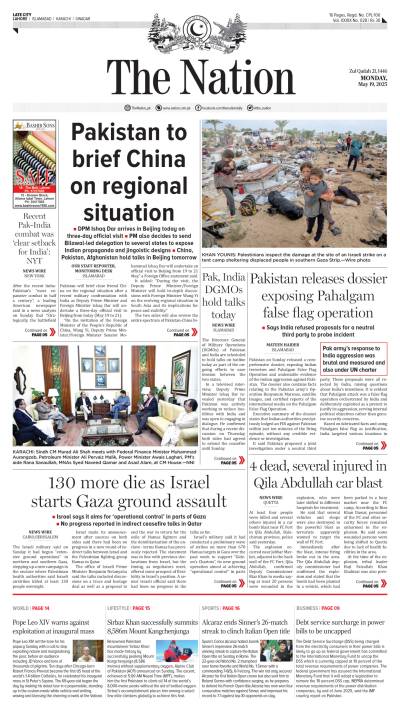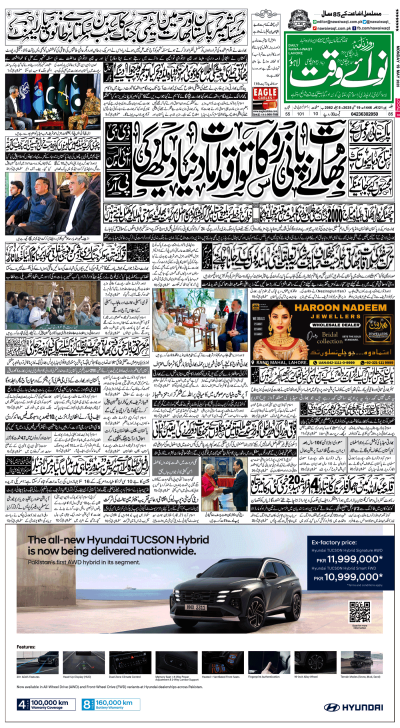Looking back at the sweep of Pak-USSR then Russia, relations since the inception of diplomatic relations in 1948 one thing is clear; relations with Russia are of immense importance to Pakistan. There have been missteps and misperceptions on both sides with ups and downs, which have necessitated a steady and successful process of trust-building. To give one example, it is widely believed that Prime Minister Liaquat Ali Khan turned down the invitation to visit the USSR and instead went to the USA. In fact, he was keen for the visit to take place, and his team had been assembled including a young army officer Sahibzada Yaqub-Khan, later Ambassador in Moscow then Foreign Minister, as he had learnt Russian in a POW camp during WW-II. Negotiations for the visit had begun through the Ambassadors of both countries in Tehran but when they were switched to Delhi, they became stalled, (as Ambassador Sajjad Hyder has related in a chapter on The Visit that Never Was in his book the Foreign Policy of Pakistan); and that is why the Prime Minister first went to Washington. India has remained a factor in constraining military and other cooperation with Pakistan. President Musharraf in his meeting with President Putin in 2006 in New York—on the sidelines of the UNGA which I attended—suggested that Russia be more forthcoming in arms sales to Pakistan now that after the US-India nuclear deal India was growing closer to the USA, or was India still that constraining a factor? President Putin frankly admitted that Russia’s arms sales and economic cooperation with India precluded arms sales cooperation with Pakistan at that time.
During the Cold War, relations were difficult, as again during the 1971 War with India and again during the Soviet involvement in Afghanistan. In the intervening period, Russian peacemaking at Tashkent to end the 1965 Indo-Pak war gave a political boost which unlocked both economic and military cooperation. This was also the case from 1972 onwards when Prime Minister Bhutto visited Moscow. The Soviet Union built the Karachi Steel Mills, major thermal power plants at Muzaffargarh, Multan, and Guddu; and assisted Pakistan in the establishment of the Oil and Gas Development Company (OGDC). After the Soviet involvement in Afghanistan ended, relations again slowly improved.
The Pakistan Steel Mills Corporation (PASMIC as it was also known in the USSR) with its 1.1-million-tonne capacity, became the largest industrial project in Pakistan. Thousands of young engineers and technicians were sent to Russia to master the various required disciplines, and many Russian experts lived in Pakistan to complete the project. The construction and other expertise gained in the process led to their deployment throughout Pakistan; but also in the wave of Pakistani labour and technicians assisting in infrastructure and other construction projects in the Gulf and the Middle East, whose foreign remittances, largesse to their families and the country benefit us to this day.
There has been a constant effort throughout on the part of all Pakistani leaders and political parties to try to improve relations with Russia. Russia, notwithstanding its traditionally priority relationship with India, has also recognised the importance of Pakistan as a middle power, its strategic location a trijunction between the Middle East, Central, and South Asia, and the role it can play in stabilising Afghanistan, which poses both an ongoing narcotics threat to Russia and a potential threat from terrorists.
The upward trajectory of our bilateral relations is encouraging. The Shanghai Cooperation Organisation (SCO)—which we joined owing to Russian and Chinese support—and the UNGA have in the past two years provided opportunities for talks between the two leaders and Foreign Ministers. One hopes that Foreign Minister Sergei Lavrov will avail the invitation to visit Islamabad at the earliest.
Trade has not reached its potential, hovering around $500 million overall, with the balance in Pakistan’s favour except when we preferred last year in 2020 to import wheat from a reliable source—$300 hundred million worth for some 700,000 tons—from Russia, when overall trade went up to $780.6 million. There are systemic hurdles, including a lack of direct flights, banking issues due to US sanctions which other countries have better managed, and slow two-month processing in issuances of business visas by the Russian side, that need to be overcome to enhance trade. The freezing of some $117 million Russian funds by the Sindh High Court at the instance of commercial parties in dispute over funds they claimed remained unsettled in the counterpart trade used to repay Soviet Steel Mills and other project assistance through mainly Pakistani textiles and garments, on the breakup of the USSR became a major irritant discouraging investment in Pakistan. This issue was finally resolved in December 2019 and all the amount due to Russia, $93.5 million was repaid and whatever else both countries agreed was due to the Pakistani business companies was also settled. A development long overdue but all the more welcome when arrived at.
Institutional mechanisms are working well. Four rounds of political consultations at Foreign Secretary level have been held. The Consultative Group on Strategic Stability has met 13 times since its first meeting in 2003 in which I had the privilege of leading our side. Of course, gestation of cooperation takes time. The Mi-35 helicopters discussed at that first meeting were delivered in 2018. On the economic side the Inter-Governmental Commission (IGC) on Trade, Economic, Scientific, and Technical Cooperation has held six meetings, and has a number of joint working groups. Pursuant to the Pakistan-Russia Military Agreement of 2017, a joint Military Technical Commission was set up, military sales explored, five joint military exercises held, two joint naval exercises apart from Russian naval ships’ participation in the multilateral AMAN exercises hosted by the Pak Navy, and six rounds of military staff talks, the latest earlier this month.
Amongst the other mechanisms, given limited space I will only draw particular attention to the Joint Coordination Committee on the North-South Gas Pipeline, now re-termed Pakistan Stream Gas Pipeline, which is pivotal.
Given that a political and institutional structure has been built up and convergences recognised, especially on Afghanistan; and given Pakistan’s objective to try to reap the benefits of inter-connectivity from China’s BRI of which CPEC is a key part, and also from Russia’s Eurasian Economic Community, where do we go from here, how do we prioritise? That is the key question. What should Pakistan’s key objectives be? On the political/diplomatic side, it is clear a closer relationship with Russia has obvious advantages in the region and beyond. What can we leverage in concrete terms from this improved relationship?
A key objective should be to get the North-South, Karachi to Lahore LPG pipeline, off the ground. The agreement was signed in 2015 and progress is slow. In negotiations since then, various hurdles have been cleared. Most recently due to the decision of the Supreme Court that the amount so far collected in the name of Gas Infrastructure Development Cess (GIDC) needs to be spent on Gas Infrastructure projects including TAPI, IP and North South Gas Pipeline project. The Ministry of Petroleum committed to the Supreme Court that GIDC funds would be spent on North South Gas Pipeline Projects. Hence the Russian side was re-engaged to acquiesce to the proposal of carrying out the project jointly on equity participation rather than entirely out of the Russian investment as originally envisaged.
This new shift necessitated the drafting of an additional Supplemental Agreement called addendum to the already agreed inter-governmental agreement. Both sides have agreed and approved this addendum. I will not go into other technical details—that the cost may go up from $1.5 to around $2.5 billion if the originally planned diameter is very sensibly increased to cater for projected higher demand now, obviating redoing the exercise in the future especially over right of way, other locational issues and financial cost benefits.
Once this mega-project flagship takes off it will begin a process of unlocking various constraints across the board and meeting future demand on which our progress depends. We must regard it as a strategic opportunity as we did with PASMIC. Looking further ahead on the economic side there is again the Steel Mill. In 2012, Russia offered a $500 million loan for its refurbishing and upgradation. While negotiations to this end continued, Russia withdrew this offer in 2015 when its economy was hit by sanctions after the takeover of Crimea, and due to declining oil prices. One would hope that when PASMIC is tendered for again, Russia should be given the first chance to restart it. When the Steel Mill was set up by the USSR, it also set up four other equivalent-capacity steel mills in Iran, India, Turkey and Egypt. Each steel mill, apart from PASMIC, soon doubled its capacity and went beyond. What happened to the Karachi Steel Mill is well known. We should not squander any opportunity to put it back on its feet and to enhance its capacity.
In conclusion, we must accord and maintain strategic focus on the Pak Stream North-South Pipeline. As it progresses on the ground apart from contributing to our developmental goals, it will have a positive knock-on impact on our overall objectives of deepening bilateral and multilateral understanding; energy, economic, and business opportunities, connectivity; military ties, counter-terrorism, counter narcotics, peaceful nuclear cooperation including towards the NSG, and concrete regional cooperation, particularly on stabilising Afghanistan.
Monday, May 19, 2025
Pak-Russia relations— the way forward
Ambassador (R) Tariq Osman Hyder
Karachi cracks down on illegal cattle markets ahead of Eid
2:19 PM | May 19, 2025
PM Shehbaz visits Karachi to honor Navy’s role in Operation Bunyan-un-Marsoos
1:20 PM | May 19, 2025
Recent conflict with Pakistan was ‘clear setback for India’: NYT
1:08 PM | May 19, 2025
PAF chief visits residence of martyred PAF officer
1:07 PM | May 19, 2025
PPP leader welcomes diplomatic role for Bilawal
May 19, 2025
-
Lahore emerges among safest global cities in Numbeo 2025 index
-
Lahore emerges among safest global cities in Numbeo 2025 index
-
India’s suspension of Indus Water Treaty legally baseless
-
Seventh polio case reported in Pakistan amid nationwide vaccination drive
-
Pakistan reports sixth polio case of 2025
-
PTA begins issuing VPN licences to regulate usage
Regional Reset
May 19, 2025
Peak Potential
May 19, 2025
United Front
May 19, 2025
Culture Shift
May 18, 2025
Tactical Shift
May 18, 2025
Pakistan’s Strategic Edge
May 19, 2025
Lessons for India
May 19, 2025
Galiyat’s Poor Network Services
May 19, 2025
A City in Neglect
May 19, 2025
Rising Cost of Living
May 19, 2025
ePaper - Nawaiwaqt
Nawaiwaqt Group | Copyright © 2025





